With Deadpool finally in cinemas this week, Empire dips back into our unrivalled access to tell the full story of the offbeat superhero movie that refused to die. Or rather, we thought we'd let the key players tell it for us.
Development
Paul Wernick (Writer): Ryan’s been attached for over a decade now. It was at New Line before Fox.
Ryan Reynolds (Deadpool, producer): It goes back to Blade: Trinity. I was given the comics then, by a studio executive who pointed out that I was essentially already playing Deadpool in that movie. I just thought, ‘Wow, this character occupies a space in the comic book universe that nobody else does.’ I still feel that way. But back then there wasn’t nearly the onslaught of comic book films. It hadn’t become its own genre yet. So it was, in a weird way, fortuitous that I didn’t get to create the character and make the movie back then, because it’s so much more timely now. In between, of course, I was given the opportunity to step in and play Deadpool in the Wolverine movie, and the way the Hollywood game works is you think to yourself, ‘Well, if I don’t do this and it works on some level, that other guy is going to get the opportunity to play Deadpool in perpetuity’, and I would’ve missed that short albeit not ideal window. So yeah, I jumped in, I knew that what was happening wasn’t exactly canon…
Wernick: The fans fucking hated that movie.
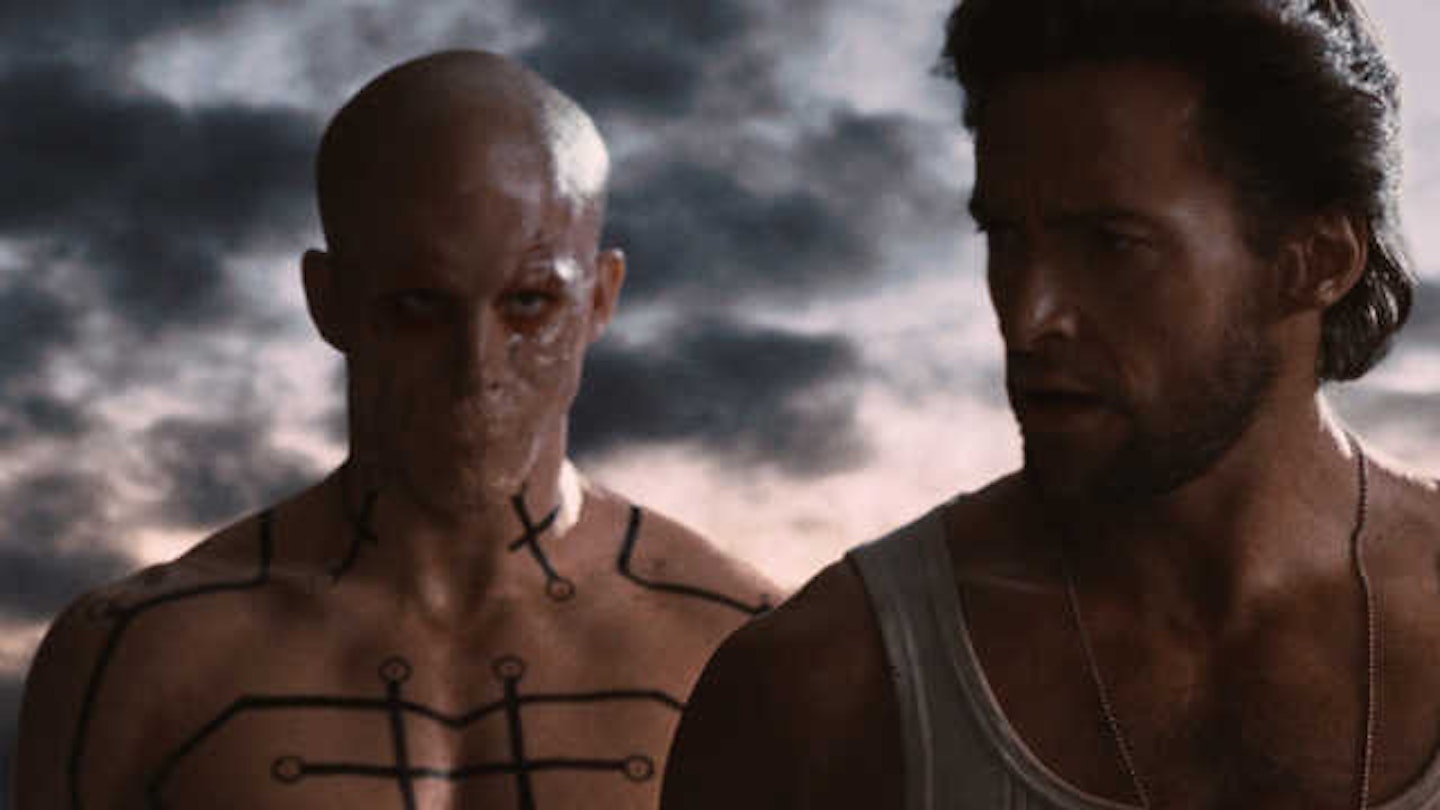
Rhett Reese (Writer): But they liked Ryan. There was interest at Fox to explore it further because people had liked Ryan in that role. So we went in and pitched Ryan a non-origin story: just a current, Deadpool having adventures, forget where he came from, let’s just meet him and dive in. And Ryan liked a lot of what we pitched but he really felt like we needed to back up and do an origin story to kind of wash away the bad taste from Wolverine. Over the next few months the three of us crafted this story interweaving two timelines: Deadpool’s origin with a current storyline in which Deadpool seeks revenge on Ajax for turning him into Deadpool, and also seeks the cure for his regenerating cells that fixed his cancer but also caused him horrible physical scarring.
Reynolds: We always knew what we wanted to do; it was just finding a way to deliver a script that could be digested and understood by a studio. We’d done so many drafts that were designed exclusively and fit into the narrow window of the fanboy’s – or fangirl’s – perspective; the people that know and love Deadpool. But to a studio that can be very difficult to understand. And rightly so: I understand why they feel that way, because what they’re dealing with is an X-Men property that works so far outside the normative experience you have with an X-Men character. It was tough. There was a lot of going back and forth. The studio system as well has a pretty routine changing of the guard, so a lot of times an executive or somebody who had really shepherded the project might leave and it was about finding a doorman again.
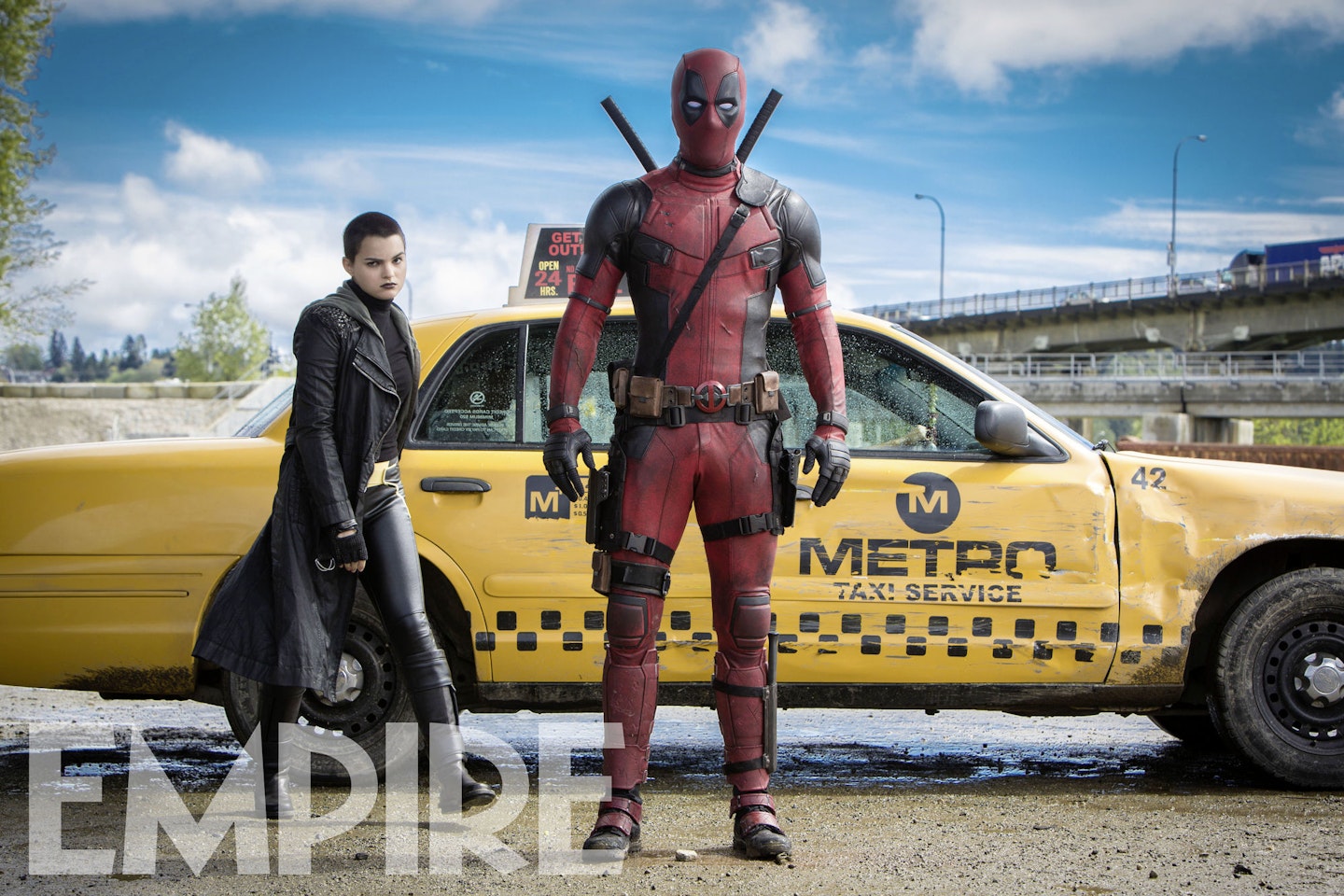
Reese: We were in a bunker together, and I do feel like, had any link in the chain not been so passionate, had Tim not been such a pit-bull… He just would not let people off the hook. He’d be emailing the poor people at Fox every couple of weeks. To their credit, they listened, although it took a while.
Tim Miller (Director): A Fox executive, who was on Deadpool at the time, Drew Crevello, had seen a piece I did online for DC Universe – the other guys. It was a cinematic piece. It was a big superhero battle. He suggested I might be interested in Deadpool, which of course I was, but as a first-time director there was then a series of hurdles. I was focused more on animation and visual effects and I really didn’t try, until I was 44, to get a movie. So it may seem like I’m really late, although I’ve been around it and wanting to do it. I had to meet Ryan and he had to approve. I had to meet Lauren Shuler Donner and she had to approve. And I had to do a treatment of, ‘Here’s how I’d do it’. And part of that whole process was doing this test that we showed the studio. It was really a way to do big scope for a relatively small budget and do some of the bigger superhero action scenes all or mostly digital, to kind of save money.
Reynolds: That test footage was really what saved us from that cyclical hell we were in. The studio saw what they had and there was a massive appetite for the character and his sensibilities, and they green-lit it. They didn’t do so with a blank cheque. It was a shoestring budget for this type of movie. We got to make the film, and we got to make it the way we wanted to make it, but we didn’t have the budget that you would normally associate with an X-Men movie.
Cast and Characters
Brianna Hildebrand (Negasonic Teenage Warhead): She's a 15-year-old gothic child, I guess, and she sees the future and she’s also a warhead, so she runs at things and explodes. She’s Colossus’ sidekick and trainee. She’s introduced towards the end of the film and she’s just helping kick ass, really. She bothers Deadpool because he can’t really make fun of her or get through to her. It’s almost like a brother-sister relationship.
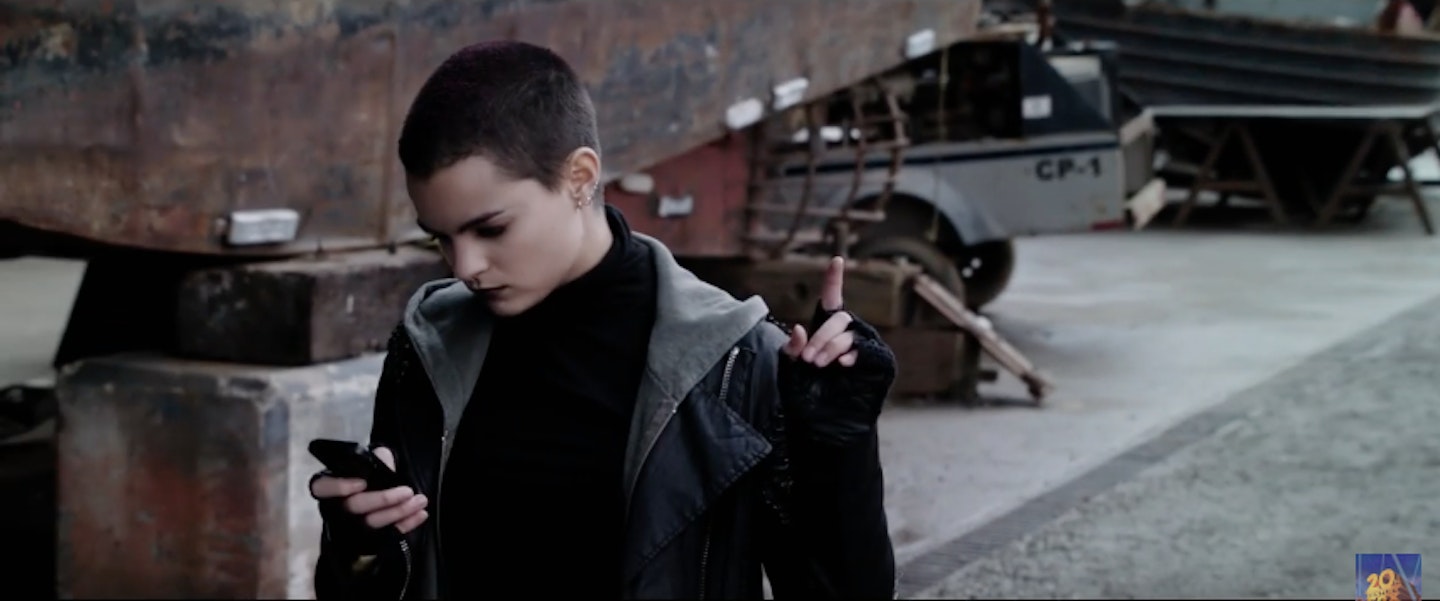
T.J. Miller (Weasel): Weasel doesn’t give a fuck about anybody but himself, and he’s kind of unapologetic about that. He runs the bar where all these mercenaries get their work. He and Wade are both such despicable human beings that we’re the only people who would be friends with each other. Weasel is liked by his customers, but that’s probably because he keeps getting them work. Whereas Wade likes him because he’s sort of as nihilistic as Wade is, in his own way.
Ed Skrein (Ajax): Ajax – or Francis – is a man who works in the workshop that operates on Wade Wilson and a number of people. Through a mix of violence and torture we mutate people into super-slaves, and a lot of them don’t come out of it very well. It’s pretty gruesome! Ajax has been through this procedure himself. He’s been given strength and agility to the limit of human capacity – that’s a lovely choice of words – and very importantly he’s had his nerve endings scorched so he can’t feel anything, including pain. The idea of getting into a fight and knowing it’s not going to hurt… That’s fun. I’ve been exploring his enjoyment of chaos. There’s a lot more uptight and angry and aggressive people in the movie than Ajax.
Gina Carano (Angel Dust): I’m Ajax’s muscle. I think she just works off adrenaline, through the mutation and what’s been done to her. It’s adrenaline, and power and strength, almost like the She-Hulk. She’s a frickin’ brick powerhouse. She can just break regular humans by touching people. Yeah, it’s been a real reach, acting-wise [laughs]. And now it’s going to be even harder to date!

Skrein: Gina is my henchwoman. There are two references we’ve had for it. One is Rutger Hauer and Daryl Hannah in Blade Runner – there’s a lot of looks and unspoken things they share together and you can see that they’re such a great, functional unit together. And the other one is De Niro and Pesci in Casino, because actually she’s more of the Pesci, and Ajax can be quite placid and relaxed about things. He’s a bit more tactical where she wants to smash things.
Carano: Really? I’m his little Joe Pesci? Okay…
Morena Baccarin (Vanessa Carlysle): She’s sort of come upon hard times and is doing what it takes to survive. She and Wade have this one-liner thing where they just bounce off each other. It’s not a conventional relationship. It’s a pretty bad-ass, honest, bare-bones relationship, which is what they both need.
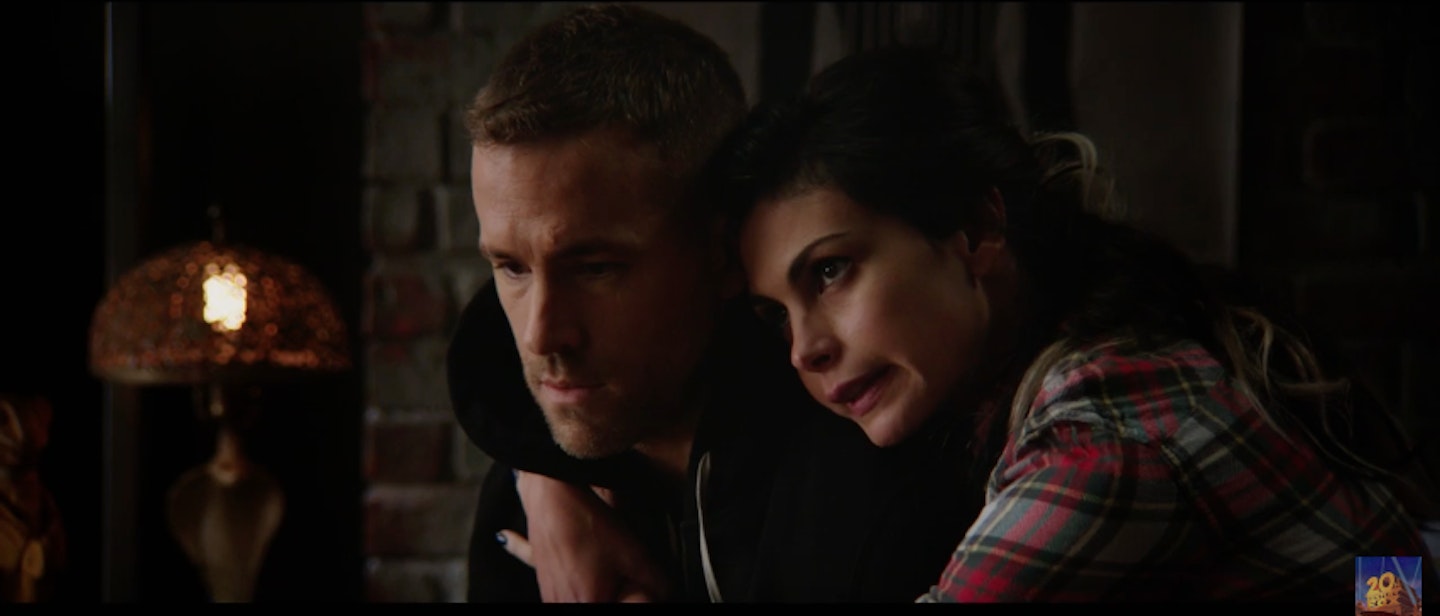
Wernick: Deadpool has a complicated relationship with an elderly blind African-American woman called Blind Al (played by Leslie Uggams). She lives with him rent-free in exchange for cleaning up after him. He makes her build Ikea furniture which always falls apart, but it amuses him.
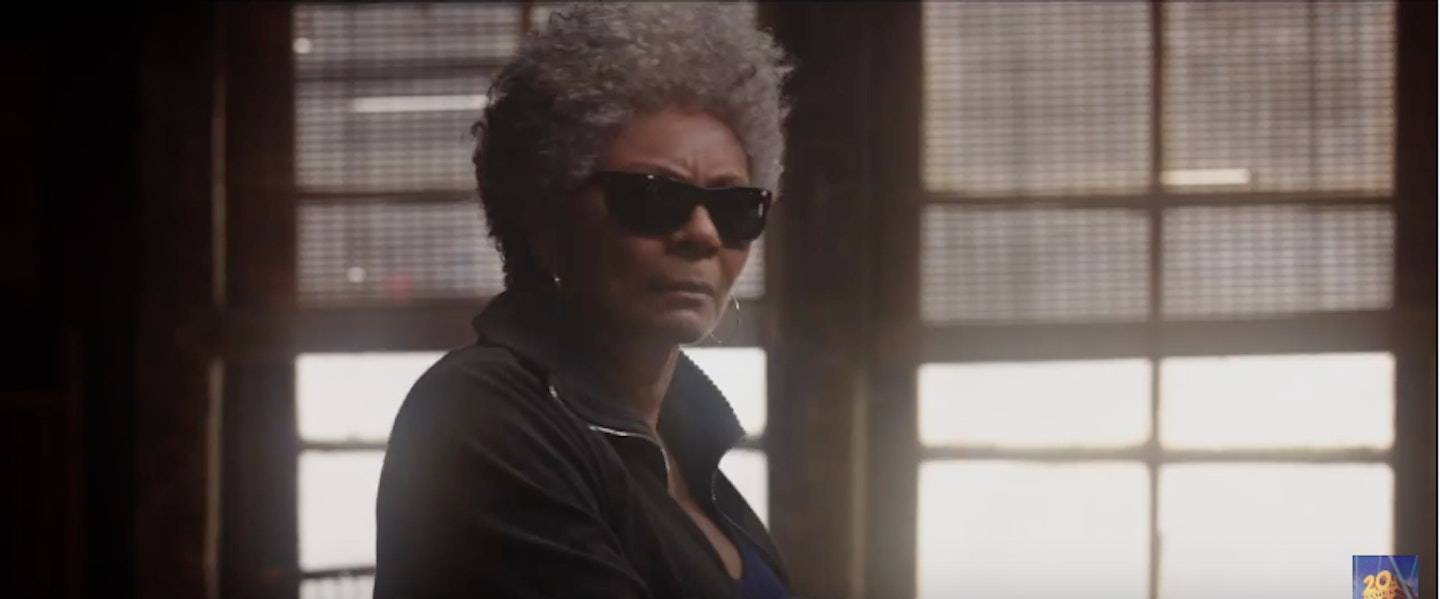
Tim Miller: As a fanboy I’ve always been like, that dude with the shiny skin is not fucking Colossus. He should be this monstrous guy, and they actually let me make him seven-and-a-half feet tall. I did actually call Daniel Cudmore to ask him if he wanted to do this, even though he’d be entirely CG the whole time. He was very nice about it. He was like, “I appreciate your offering, but nah.” (Deadpool's Colossus is a combination of Andre Tricoteux, Greg LaSalle and Stefan Kapicic)
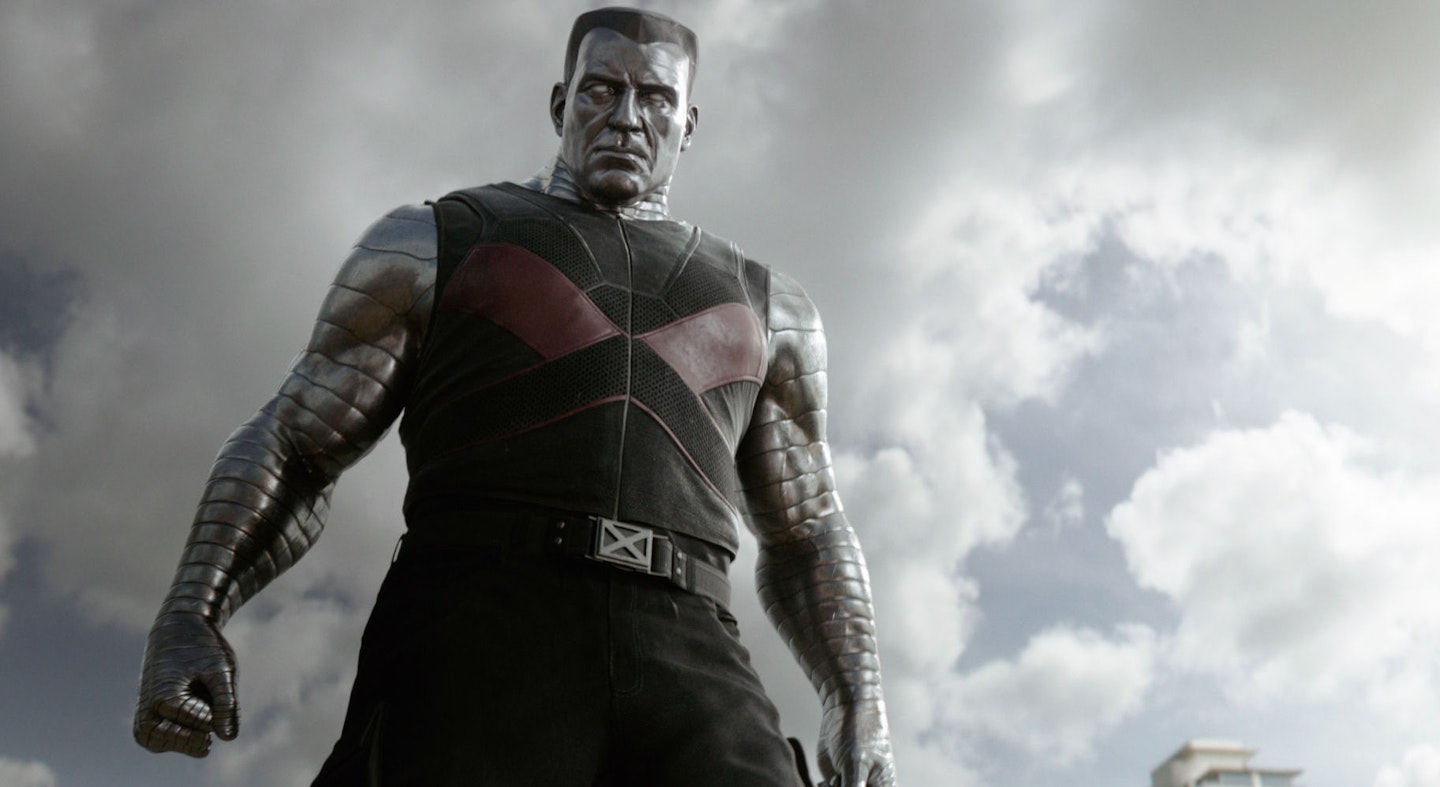
Bill Corso (Makeup designer): Just scars on Ryan’s face isn’t interesting. There’s not an iconic guy there. Freddy [Krueger] is iconic and strong looking. So’s Mickey Rourke in Sin City. So I kind of took Ryan’s face and amplified a lot of the features. Even though he’s mutated there’s a much bigger sense of character about his face. You’re changing the jawline and playing with his nose. He’s got a really strong look in the make-up. It’s weird – when you see him in it on set, and he’s wearing a hoodie and he just looks like this creepy guy. But then when you see him in the costume and he takes the mask off, it works. It balances out.
Reynolds: Emoting under the mask is strange. You have to push a little harder. I have to move my body a little bit more than I would normally to convey an idea or a thought, and certainly with comedy it’s a little harder. It’s usually micro facial expressions that sell a joke or an idea, and you don’t have that obviously, so you have to push through that mask hard. But it was quite surprising to us: it worked really well. And of course the mask is very lightly animated, or added to, in the post-production process, which gives us a big boost.
The Action
Philip J. Silvera (Fight Co-Ordinator): The ‘action tone’ is really hard to describe with this character. We’re dealing with superhero characters but we’re trying to find a real-world weight to them all. And there’s a huge comedy element to the action. That’s where Ryan comes in a lot of the time. We design the sequences as best we can, knowing the characters, and then Ryan and Tim come in and inject the life that we may be missing. Wade Wilson was tactically trained. He’s trained to kill people and not be killed, but now he’s got these mutant powers so he can’t die. So it’s kinda like all bets are off. He used to be really stealthy, but now he can charge people head-on. But he still has that mercenary training and tactical side. But now he can take the punishment. That’s its own story right there.

Jonathan Rothbart (VFX Supervisor): Colossus fights Angel Dust in the third act of the film, and it’s fun because he’s massive and she’s about 5’9. So we’re really playing off this dynamic of their different sizes. Planning how those two can fight while she’s so small by comparison has been fun. We had to figure that out logistically. She can’t just hit him in the face.
Carano: I’m usually quite fluid in my movements, but with this everything has to be so powerful. I actually did some Cross-Fit for this one, but I was also getting into the lifting and strength training. Colossus is CGI so everything I do is going to have to be selling it. I did it on set with Andre, but then everything we did together I have to do again by myself, just so they can fit it all together. It’s hard to fight nobody. It makes me a bit nervous because I want to be sure it sells right. But I know Phil and the stunt guys know what they’re doing and they specialise in this. It’s my first time on a CGI kick. I’m more of a fan of one-on-one, but then again I’ve never done this, so we’ll see…
Skrein: The first big setpiece is in the workshop. I suppose it’s the climax of the back story portion of the movie. It accumulates in this big, messy, brutal fight. That’s very different in its dynamic from the second big fight which is the finale, which is a lot more technical, very different, different mentalities from both fighters, a lot longer, more gags and cool stuff. In the first fight we’re fighting with oxygen tanks and fire extinguishers, and in the last one I’ve got two axes, which is the greatest fun.
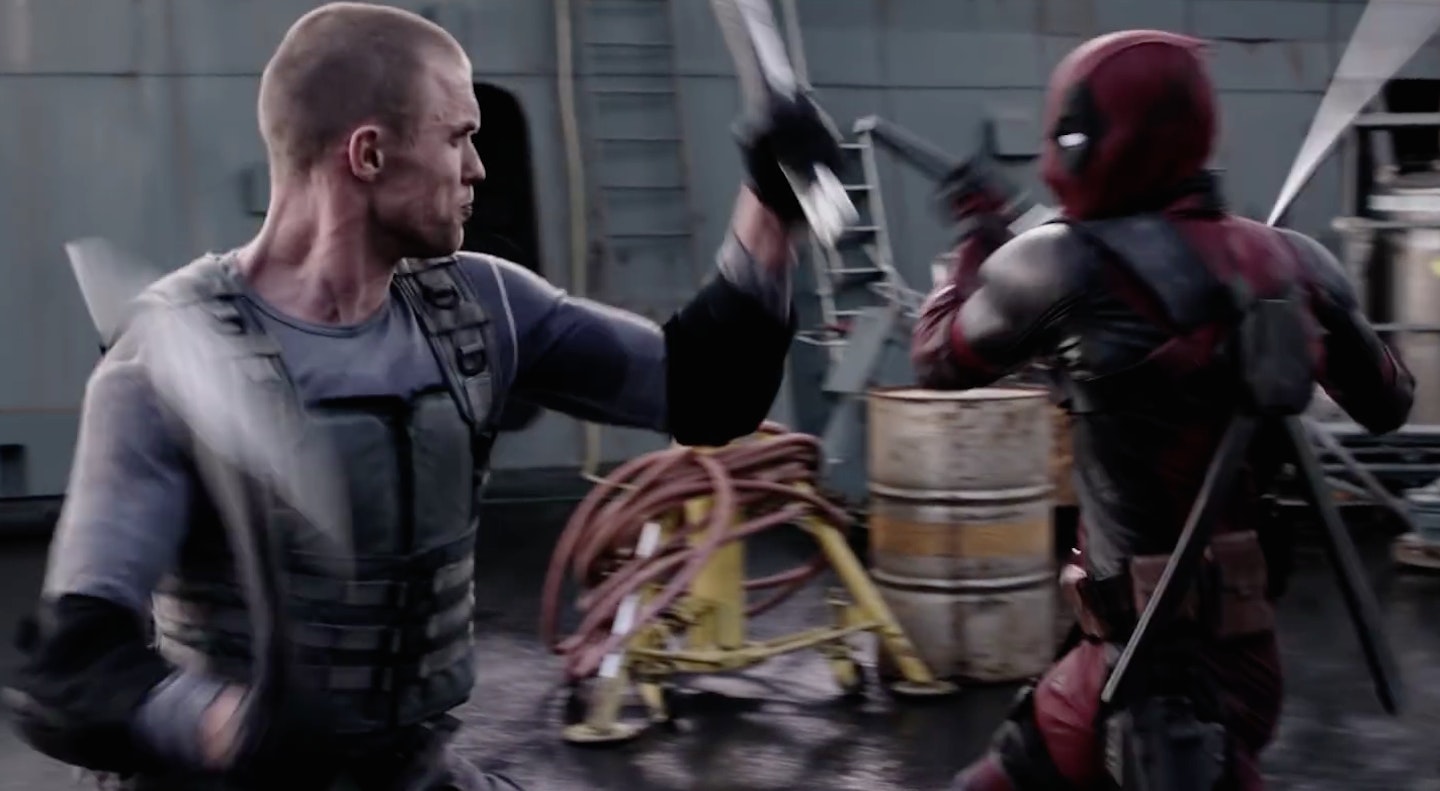
Tim Miller: Honestly, I’m tired of that shit where the action just goes on and on forever and it’s kind of relentless and it gets numbing. Here, I think, we’ve got a really great amount of action, but mixed with a lot of great character moments. We still have the spectacle, but we have a lot of character development so that when the shit starts blowing up, you might actually care about what happens to the characters. Tonally it’s just got everything. It’s an action movie and there’s torture and cancer and a love story. It’s so scattered, but it works.
Skrein: I’ve been walking around the place we’re staying with these two great big foam stunt axes. I’ll get into the lift in the morning with all my training gear, wearing my Liverpool strip, holding two axes… ‘Good morning,’ to a lady with a chihuahua or something. The best was that the Canadian Women’s Soccer team is staying in our hotel. I was standing there and this woman walked in, in the full Canadian Women’s kit, and she went ‘Tsk, ooooh no…’ And I apologised and explained the axes weren’t real, and she said, ‘No, you support Liverpool.’
The Fourth Wall
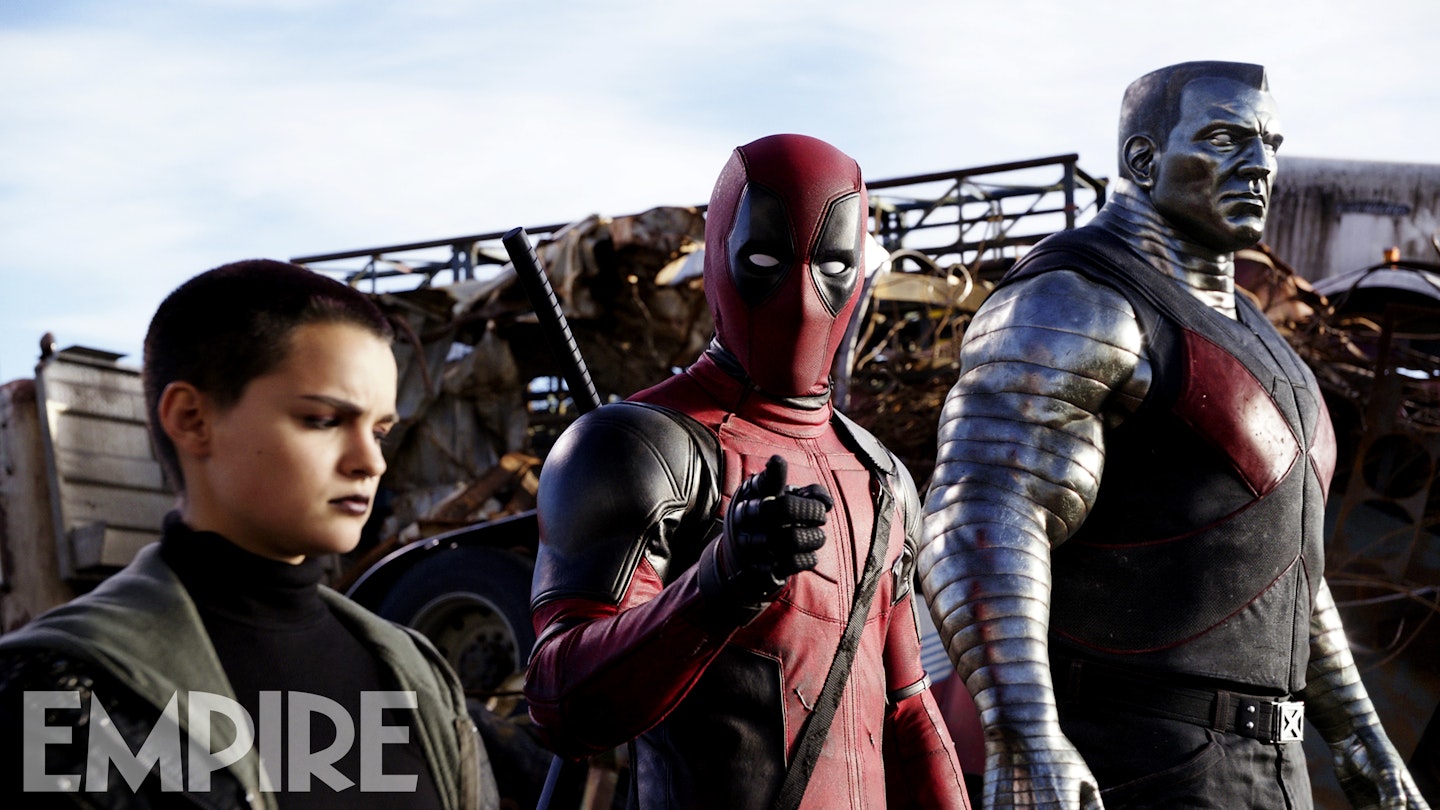
T.J. Miller: The problem with origin stories is that we’ve all already seen that now. And we’ve seen the funny ones, like Guardians Of the Galaxy, that are self-aware. We’ve seen the evil corporations. We’ve seen all of it. Age of Ultron felt recycled. Deadpool is a departure from that kind of aesthetic. A lot of these movies aren’t even aware of the irony of ending on a happy group shot and all that. They’re not even winking to the audience. Deadpool does a lot of that. Deadpool talks directly to the audience. The narrative is not classic or linear.
Tim Miller: Comics of Deadpool have been written since Ryan played him in Wolverine, so there’s even mention of Ryan Reynolds in the comic books; that he knows he’s Ryan Reynolds. So we have that. And there’s a couple of fourth-wall breaks where, not only does he know he’s Ryan Reynolds, he knows he played Green Lantern and other superheroes, so we have jokes about that. So it’s like meta-meta-meta and it’s like where do you draw the line there? I’m not quite sure. We’ve got a few jokes there. Does he know he’s Ryan Reynolds? Does he know he’s a comic book character? Does he know he’s a comic book character in a comic book movie? And Ryan Reynolds is playing him and does he know what else Ryan Reynolds has played in other movies? I mean, that’s a rabbit hole that’s pretty deep, but I think it’s funny.
The R-Rating
Reese: I think there was always that knowledge that you do sacrifice upside in terms of box office when you make an R-rated movie, because a big bulk of your superhero loving audience is below the age of 17. I think it was always just a question of, can you do this and remain faithful to the character with a PG-13 rating? Because if you can it’ll be easier to make money and less risk for the studio. We looked at it carefully and we wrote a PG-13 draft that we’re actually very proud of, although it’s not as fun as the R-rated draft because there are certain limits to what you can and can’t do involving sex and violence and language and mature themes. Ultimately our preference was to do it R. Then Simon Kinberg read it, and he insisted it had to be R. There are so many oranges in the marketplace; let’s make an apple. That was a very brave decision.
T.J. Miller: We did stuff that just couldn’t stay, that I really did love. I riffed both the lines from the trailer: that one where he’s like, ‘You look like Freddy Krueger face-fucked a topographical map of Utah.’ We did a lot of that stuff. I liked, ‘You look like fraternal twins gave birth to a nightmare in a house fire.’ There was a lot of shit like that. I’m a comedian. I did not get into the game to do superhero movies. I wasn’t growing up going, ‘One day I’ll wear really tight suits and be an arms dealer to the stars.’ I have to do a fair amount of expositional lifting in this film, so I’d riff whenever I could. There was one scene where I kept riffing and Tim was just like, ‘T.J., just pick up the fucking phone, say your fucking line and then hang up.’ So I did that and he said, ‘You’re dialling funny!’
Tim Miller: I had to put a gun to his head to say, ‘You must say the fucking lines or I will kill you.’ There were some jokes in there that, to me, were the funniest jokes in the movie, but people didn’t laugh in the test screenings. Ryan goes, ‘I will shoot you in the fucking cat!’ That’s so absurd, it’s hilarious. People were like, ‘What does that even mean?’ It doesn’t mean anything! It’s just funny! But am I making a movie for me or for the audience?
